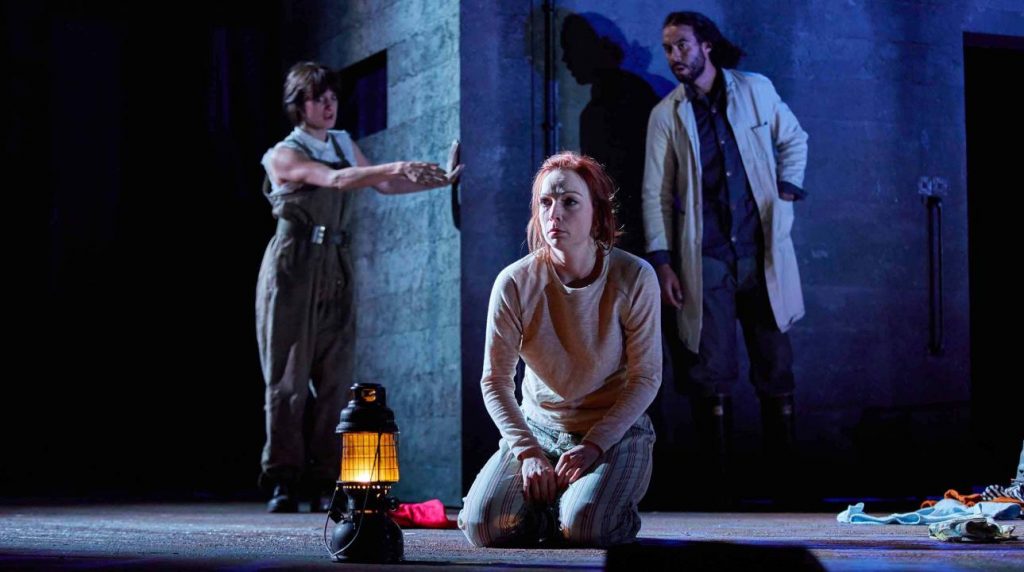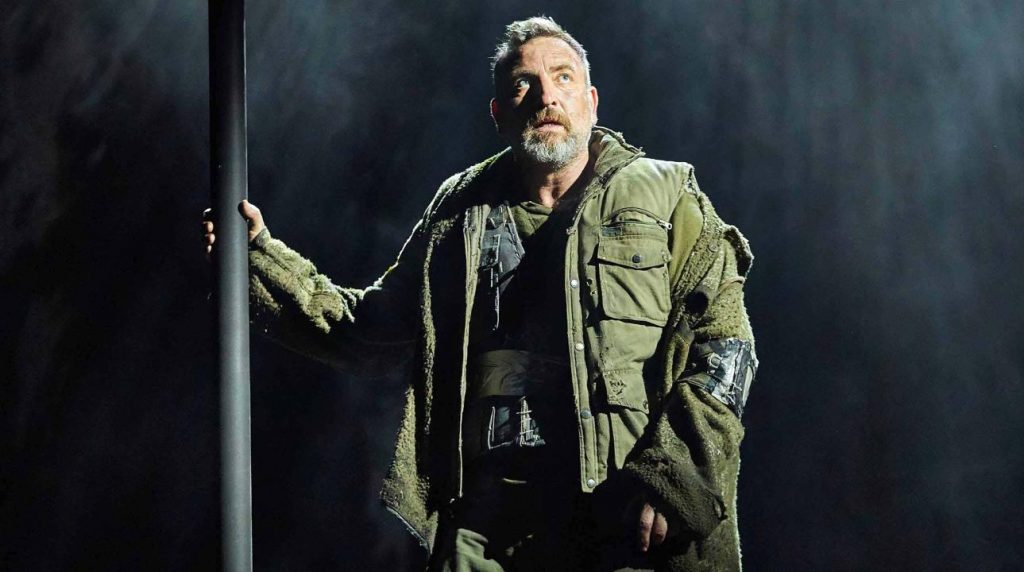I have an interesting relationship with Macbeth. The Scottish Tragedy, as it is superstitiously referred to, is easily my favourite work in the Shakespeare corpus, but at the same time it is a peculiar text with a difficult, tightly packed plot, multifaceted characters that defy easy classification as heroes or villains, and a pervasive sense of doom and gloom – that, together with the language flourishes for which it is famous, makes it very easy to get wrong. The more conservative renditions tend to play it safe, but are easily at risk of repetition; the more imaginative are at risk of losing the particular mood of the play. This most recent take of Macbeth by the National Theatre elegantly avoids both perils, and delivers a highly atmospheric performance, giving a new spin to a much-told tale in a subtle way that remains loyal to the original.
Kirsty Besterman
Michael Nardone
Atmosphere is a big part of Macbeth and a huge contributing factor in its success, and this production perfectly manages to capture that mounting oppressive feeling that is so cleverly built into the text of the play. Rae Smith’s set design and Moritz Junge’s costume design play a big part in this, translating the setting of the play to a nonspecific dystopian world where castles are replaced by concrete pillboxes, battles are still – or once again – fought with blades, and a jungle-like, encroaching nature appears ever-present even before Birnam Wood marches at last upon Dunsinane. It is Macbeth with a tinge of Mad Max – and it works surprisingly well, making the Medieval solemnity of the language not feel at all out of place, while giving the performance a rougher, visceral edge that very much suits it. But the production is also extremely clever in its use of light, and especially sound, to generate disquiet; tackling a text that uses auditive cues almost compulsively, sound designer Paul Arditti weaves a net of chirping crickets, hooting owls and ominous knocks, serving as both a counterpoint to the action and an admonition of things to come.
Michael Nardone as Macbeth and Kirsty Besterman as Lady Macbeth are both invested with an arduous task, tackling two parts among the best known and most challenging in Shakespeare. Nardone makes his Macbeth altogether the good man trapped in the consequences of his bad deed; he is touching in his indecisiveness, tragic in his remorse, frantic in his reaction to the apparition of the ghost of Banquo, and struggling like a drowning man towards the ending. Besterman gives Lady Macbeth a sarcastic spin that adds depth to her reading of the character and makes her downfall even more haunting by contrast. Her take on the character doesn’t attempt to be pleasant, but is most certainly very human – a clever woman who nonetheless believes herself to be more impervious to the horrible actions she is instigating than she really is. Patrick Robinson has a solemn, intense stage presence as Banquo; Ross Waiton is a sharp and somewhat tormented Macduff.
The real stars of this production, however, are Elizabeth Chan, Hauk Pattison, and Evelyn Roberts as the witches. The weird sisters are given an echoing delivery and a striking physicality; they slither, climb up trees, scatter and gather erratically, get into Macbeth’s personal space and shy away, hiding in the shadows in such a way that no one is ever entirely sure whether they are still there or not; they bend ideas of gender and give off a truly otherworldly vibe. Their scenes are by far the most intense and impactful, and the ones that linger the most once the play is over. It is perhaps fit for a play that has a long tradition of being remembered for its supernatural element, that it is this representation of the uncanny that ends up colouring the whole production, giving an eerie feeling to this all-too-relevant story of destructive ambition.

